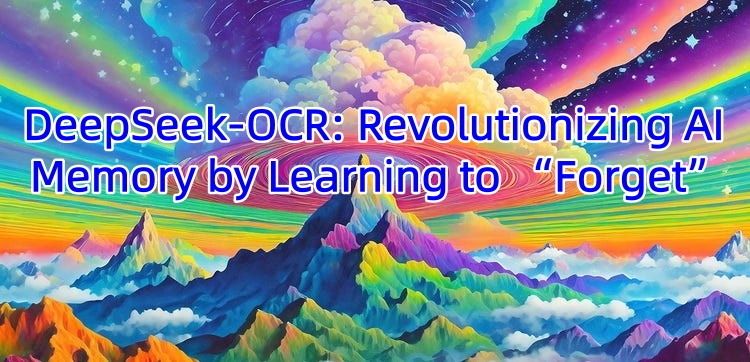Title: DeepSeek-OCR Breakthrough: How “Forgetting” Makes AI Smarter and More Efficient
Meta Description: Discover how DeepSeek-OCR’s revolutionary memory model mimics human forgetting, slashing token use by 90% while maintaining 97% accuracy. Learn about adaptive compression & the future of efficient AI.
URL Slug: deepseek-ocr-ai-forgetting-breakthrough
In a significant leap for artificial intelligence, DeepSeek’s latest model, DeepSeek-OCR, introduces a groundbreaking approach to information processing. Rather than analyzing text word-by-word, this innovative system processes entire pages as images, enabling the AI to store more content using significantly fewer tokens.
Inspired by Human Memory
The development team drew inspiration from human memory and forgetting mechanisms. Just as our memories compress over time—losing resolution but gaining efficiency—DeepSeek-OCR implements a similar principle of intelligent compression.
Why Forgetting Isn’t a Flaw
The core innovation lies in replacing detailed word-by-word recording with token-efficient “visual tokens” that can still output editable text and structured content. Consider this comparison:
-
A standard A4 page converted to digital text might contain 1,000 text tokens
-
DeepSeek-OCR processes the same page as an image, capturing all information using just 100 visual tokens
This represents a 10x compression ratio while achieving an impressive 97% decoding accuracy. Even at extreme 20x compression, accuracy remains around 60%.
This “blurring” approach mirrors human consciousness. Our brains don’t record every detail but instead store impressions, key information, and emotional connections—essentially recoding memories for more efficient storage.
The Wisdom of Adaptive Forgetting
In our digital age, where cloud backups and unlimited storage have become standard, “never forgetting” is often seen as progress. However, DeepSeek-OCR reminds us that forgetting isn’t a defect but an inherent order—a concept psychology terms “adaptive forgetting.”
The technology’s implications extend far beyond technical specifications. By transforming one-dimensional language into two-dimensional visual processing, DeepSeek-OCR creates a new memory architecture for AI: keeping recent information in high resolution while allowing older memories to gradually fade—much like human memory consolidation.
The Future of AI Memory Systems
This breakthrough potentially solves the “infinite context” challenge, creating a biological-like dynamic balance between data retention and computational costs. Future AI systems may no longer require expensive massive storage arrays but could instead feature layered, rhythmic, breathing memory systems that retain what’s important and forget redundancies.
DeepSeek-OCR Key Features:
-
2D Optical Mapping: Compresses long scanned documents to one-tenth their original size while preserving layout formats
-
Reduced Token Consumption: Dramatically lowers AI processing requirements
-
Optical Understanding: Analyzes document layouts, supports handwritten notes, and mixed-language text
-
Compact Model Size: At just 6.6GB, it runs on local GPUs, solving AI scaling cost challenges
-
Dynamic Compression: Features time-based compression mechanisms that continuously save memory and storage space
The Bigger Picture
Whether for machines or human hearts, what we need isn’t perfect recall but truthful recording. The real wisdom lies in remembering love and信念 rather than pain and regret—recalling directional experience rather than every pothole along the path. Selective forgetting enables rebirth, not through erasure but through reorganization and recreation.
Tags: #DeepSeekOCR #AIMemory #MachineLearning #AIInnovation #AdaptiveForgetting #TokenEfficiency #AICompression #FutureOfAI

